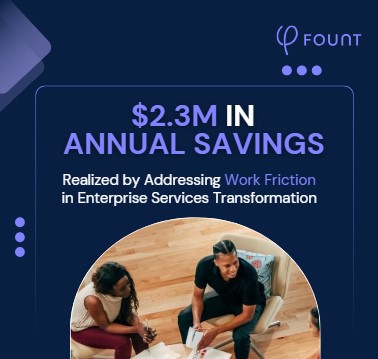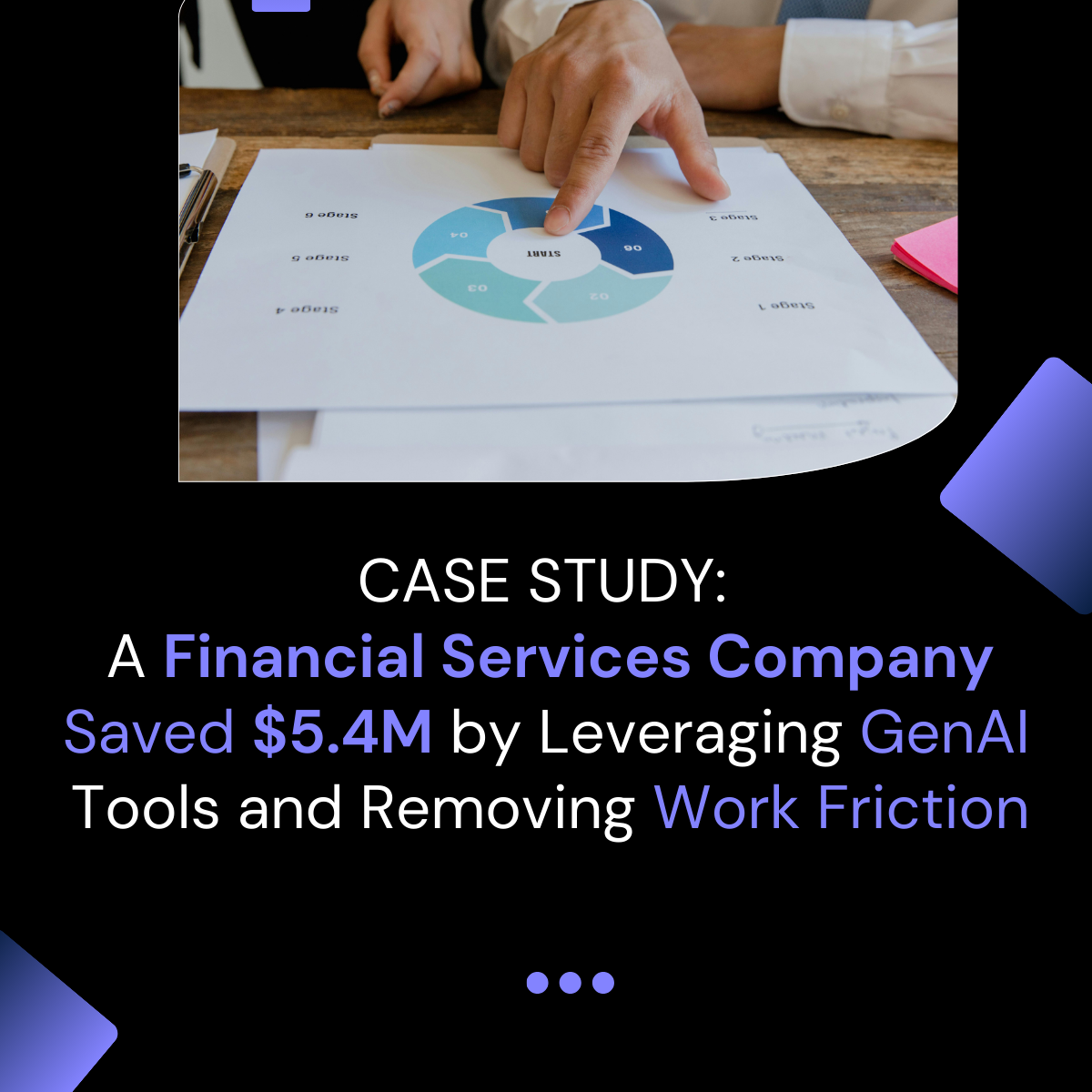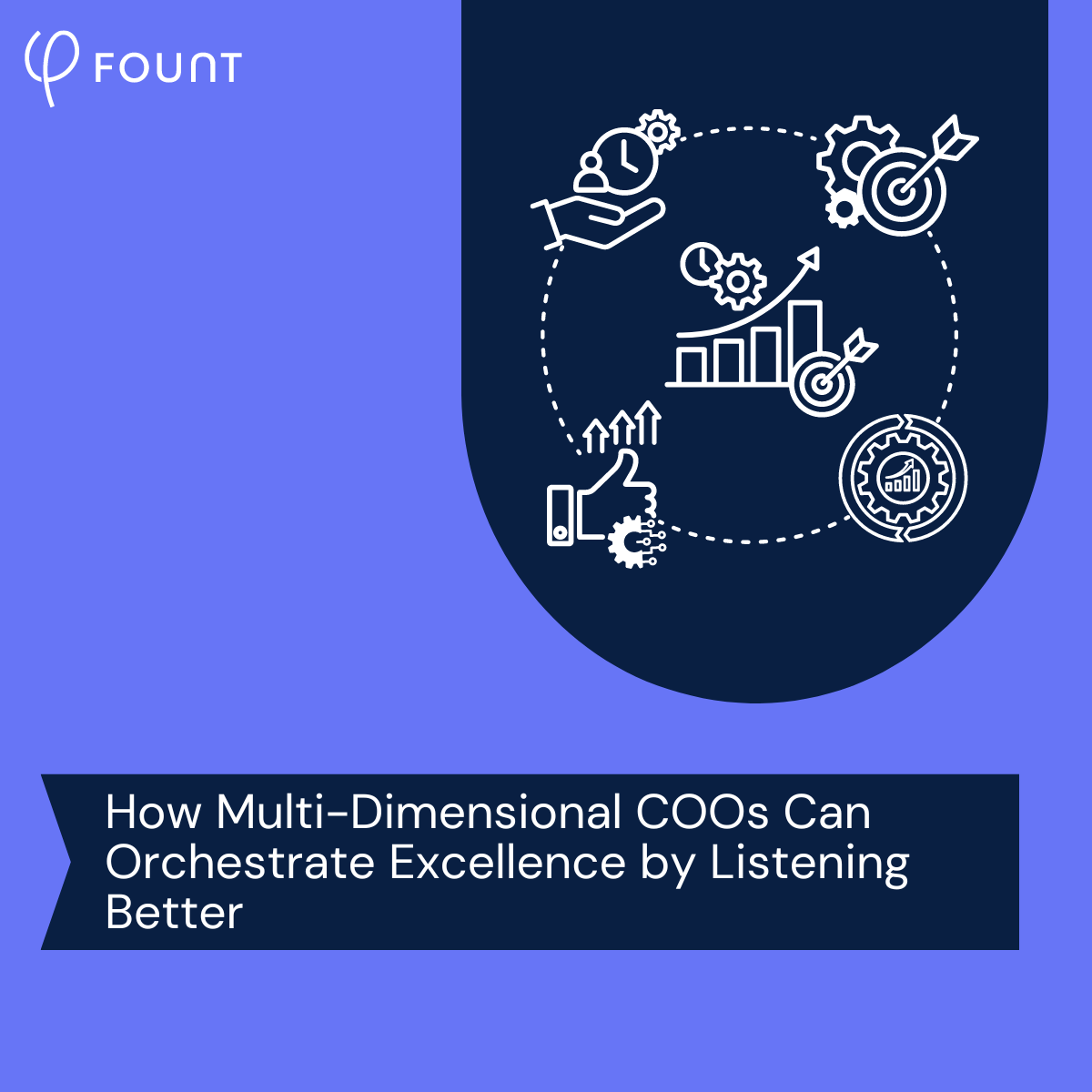Table of Contents
Key Insights from the Digital Transformation & AI & in Business Conference
A summary of the details of the article will go here.
by Tom Folley, Enterprise Account Executive at FOUNT Global, Inc.
Last week, I attended the AI and Digital Transformation Conference in London, organized by Roar Media . It was one of the more engaged crowds I’ve seen at conferences – in most sessions, there were more attendee questions than time to answer them.
The good news: presentations and conversations converged on a few key themes around AI and digital transformation. In this piece, I’ll address four:
- How to decide who should lead AI at your organization
- Where to start your AI journey
- How to decide what your next AI project should be
- How Will You Get Your People On Board?
1. Who Should Lead AI at Your Organization?
Many organizations right now are scrambling to implement AI. In some cases, the transition is happening in a series of ad hoc, boots-on-the-ground experiments. Elsewhere, leaders are looking to create distinct roles and even departments dedicated to AI.
Regardless of your approach, someone has to be in charge of AI. The key to choosing the right person, according to several of the speakers at the conference, is to look not for a specific skill set or background but rather for a specific type of person.
“They need to be curious about implementing GenAI for code writing,” said Stefania Bonà, Head of AI products at online banking provider Trustly . “There are lots of internal politics around it,” she added, noting that the right person for the role is innately curious and passionate enough to navigate those waters.
Riccardo Calliano, VP of Finance, GenAI Commercial Investments, at GSK , agreed. He suggested that, to succeed as an AI leader, a person needs to “be curious and passionate and try to learn the next level of whatever it is [they’re] investigating.”
The takeaway:
At this phase in AI’s maturity, the right person to lead AI within an organization is one who is passionate about AI. Key to success right now is learning as much as possible about the technology, experimenting with it, and applying insights to your specific organization and the work you do.
2. Where Should You Start on the Road to AI?
Just nine percent of today’s leaders think workers are keeping pace with today’s technological advancements. What’s more, employers expect 44 percent of their employees’ skills will be disrupted in the next five years.
Those two numbers speak to the unique strain of our current moment: executives know they need to embrace AI, but
a) it’s difficult to know where to start; and b) the stakes of getting it wrong are enormously high.
To that end, the conference offered a refreshing refrain: get your data in order.
We all know that data is the foundation of AI. Time and again, presenters emphasized the importance of building a strong data foundation to prepare your organization to implement AI. That means investing in structuring data, labeling data, setting governance standards, etc.
All of these “unsexy” things are nevertheless essential for running AI successfully.
“Sort your data out,” said Martin Stockdale, Head of Fraud at Kennedys LLP. “Map processes. Know your as-is. How can you change your ‘as-is’ if you don’t know what your ‘as-is’ is?” he said.
Stephanie Bonà agreed: “You need a strong data framework to build products based on machine learning”. Her presentation also included a meme to illustrate her point (Figure 1).
The takeaway: Start experimenting with AI today. But know that you can’t have a serious AI strategy without a solid data foundation. So if you haven’t yet gotten your data in order, start that process now.
3. Where Should You Deploy AI Tools Next?
The speakers were unanimous on this front: start with a business problem.
In her presentation on responsible AI, Rachel Harrison-Smith, Group Chief Enterprise Data Architect for Bupa, emphasized that every AI implementation should start with a business problem rather than the technology.
Bonà agreed: “Don’t fall in love with the tech,” she said. “Start with ‘What are we trying to solve?’ Then, ‘Can AI solve it?’”
Another important consideration: Should AI solve it? In many cases, organizations have existing technologies and tools that can solve problems, meaning they don’t need to invest in a new, AI-powered tool.
One perspective that was missing from the conference, however, was that of the employee. While it’s true that organizations should start with a business problem when considering AI solutions, it’s also true that AI is not a top-down technology.
Whereas other types of digital transformations can succeed with a top-down mandate (moving to the cloud, for example), AI cannot. So, in addition to identifying a business problem, it’s important to gather first-person worker data about that problem.
AI is most effective – and therefore delivers the greatest ROI – when it removes friction from specific work tasks that employees complete day to day. So, the ideal AI use case is one that not only addresses a business problem but that does so in a way that makes individual workers’ lives better.
The takeaway: AI is not magic. AI adoption should never be the goal. Instead, look for real business problems and points of friction in employees’ work that AI can help solve.
4. How Will You Get Your People On Board?
Whether a digital transformation involves AI or another technology, you’ll have to get your people on board with it for success. Even for top-down transformations, where you can effectively force employees to use a certain type of technology, results tend to be better when they actually embrace the tech (rather than resisting the whole way).
To some extent, what works elsewhere will work with AI.
“Start with people,” said Natalia Konstantinova, BP’s Global Architecture Lead in AI. “Educate and bring people on the journey at all levels. Be prepared to invest in change management.”
I agree, but with a slight spin: start with people, yes. But as I mentioned above: start with where people encounter friction in their day-to-day work. Aim to find AI solutions that reduce or remove that friction.
When that’s your starting point, you’ll have to invest less in change management.
Konstantinova also stressed that AI needs KPIs. Calliano suggested that adoption of a tool should be considered a leading indicator for the success of an AI transformation.
But again, I’d push back. Employee acceptance comes before adoption. Measuring it can give an organization an even earlier sense of how well an AI-driven transformation is performing.
For example: if you measure, from the employees’ perspective, how well an AI tool helps them complete various tasks it’s supposed to facilitate, you’ll learn much more about the success of the AI tool than what adoption alone can tell you. And you’ll learn it in time to adjust course and keep your investment ROI positive.
The takeaway: All digital transformations are about people as much as technology. For AI, that’s doubly true. To get people on board with a bottom-up digital transformation, start by looking at where their work is most difficult and aim to adopt technology that makes it easier.
The AI Transformation Is Further Along Than You Think
Since the launch of ChatGPT two years ago, AI has accelerated faster than forecasters anticipated. It will likely continue to do so. The AI anxiety – and ongoing anxiety about driving digital transformation more generally – that leaders feel right now is real.
Attending the conference reiterated for me that FOUNT’s approach can provide an antidote.
We help identify high-friction areas within an organization, like redundant processes, underperforming tools, or constant system switching. This illustrates where AI or other digital transformation initiatives can have the biggest impact.
By tailoring AI rollouts to address specific pain points, we help reduce employee resistance and align technology investments with what teams actually need. FOUNT’s data makes it easier to build AI initiatives from the bottom up, focusing on the real challenges employees face, rather than relying on a top-down approach.
When you’re ready to build an AI strategy that will help your organization keep pace with the changing world, get in touch. We’d love to help.
Or see how we helped Gamma Financial optimize their AI investments.
Related Resources
See all News
Guest Post
3 Signs Your GBS Is Creating Friction Instead of Flow (And How to Fix It)

FOUNT News
June Newsletter: Friction is Killing Your AI ROI.
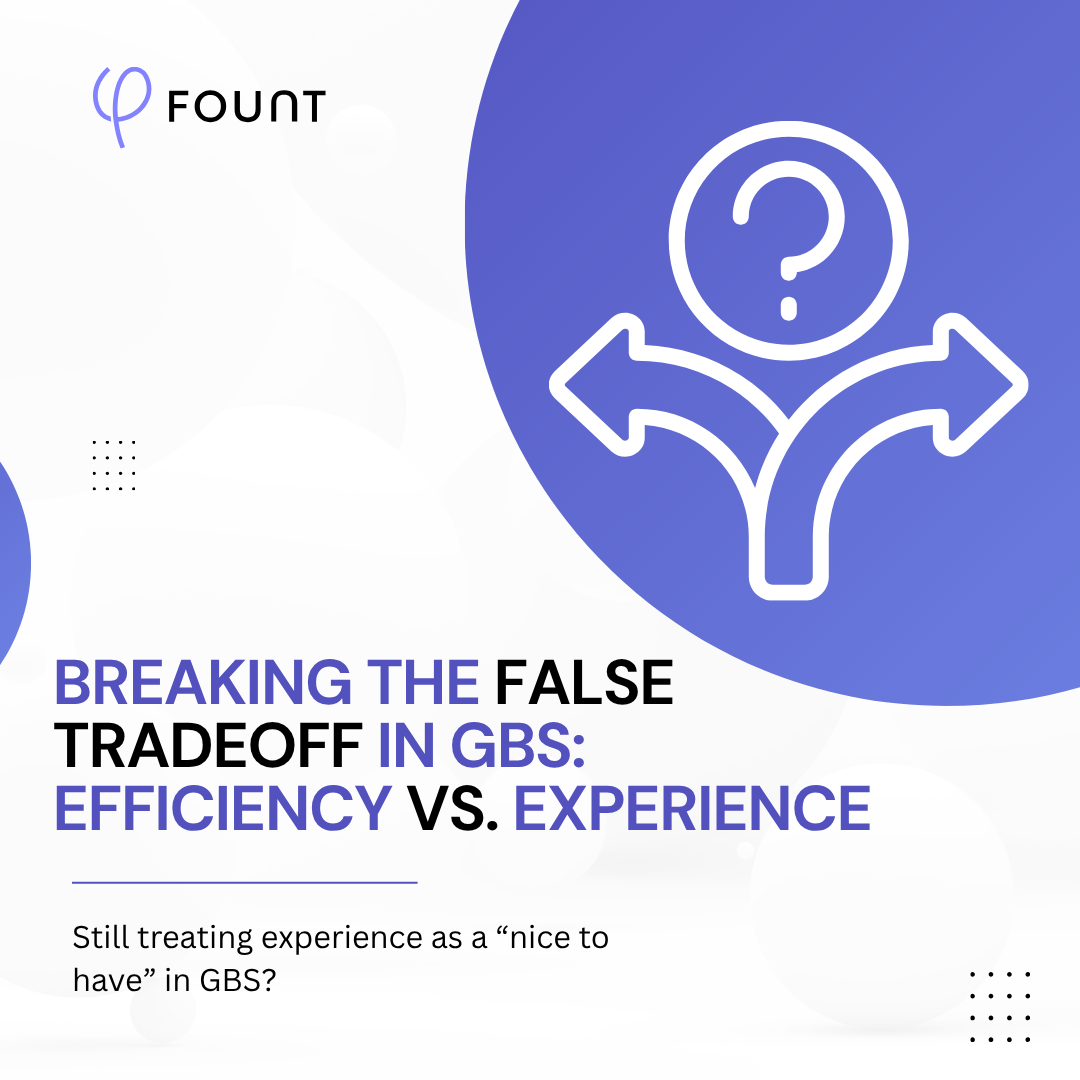
Insights
Breaking the False Tradeoff in GBS: Efficiency vs. Experience
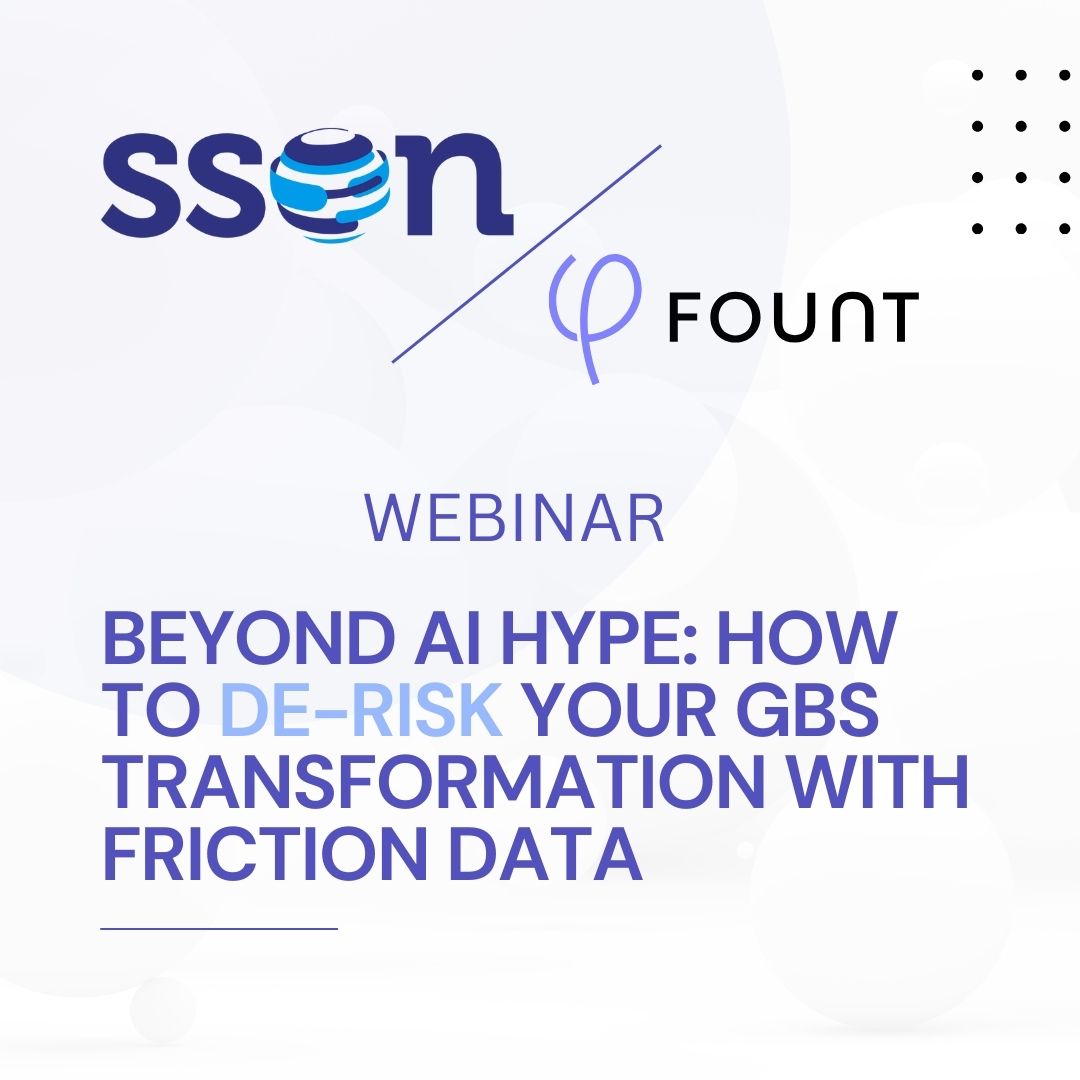
Events
LIVE Webinar – July 9th for SSON Network. Beyond AI Hype: How to De-Risk Your GBS Transformation with Friction Data
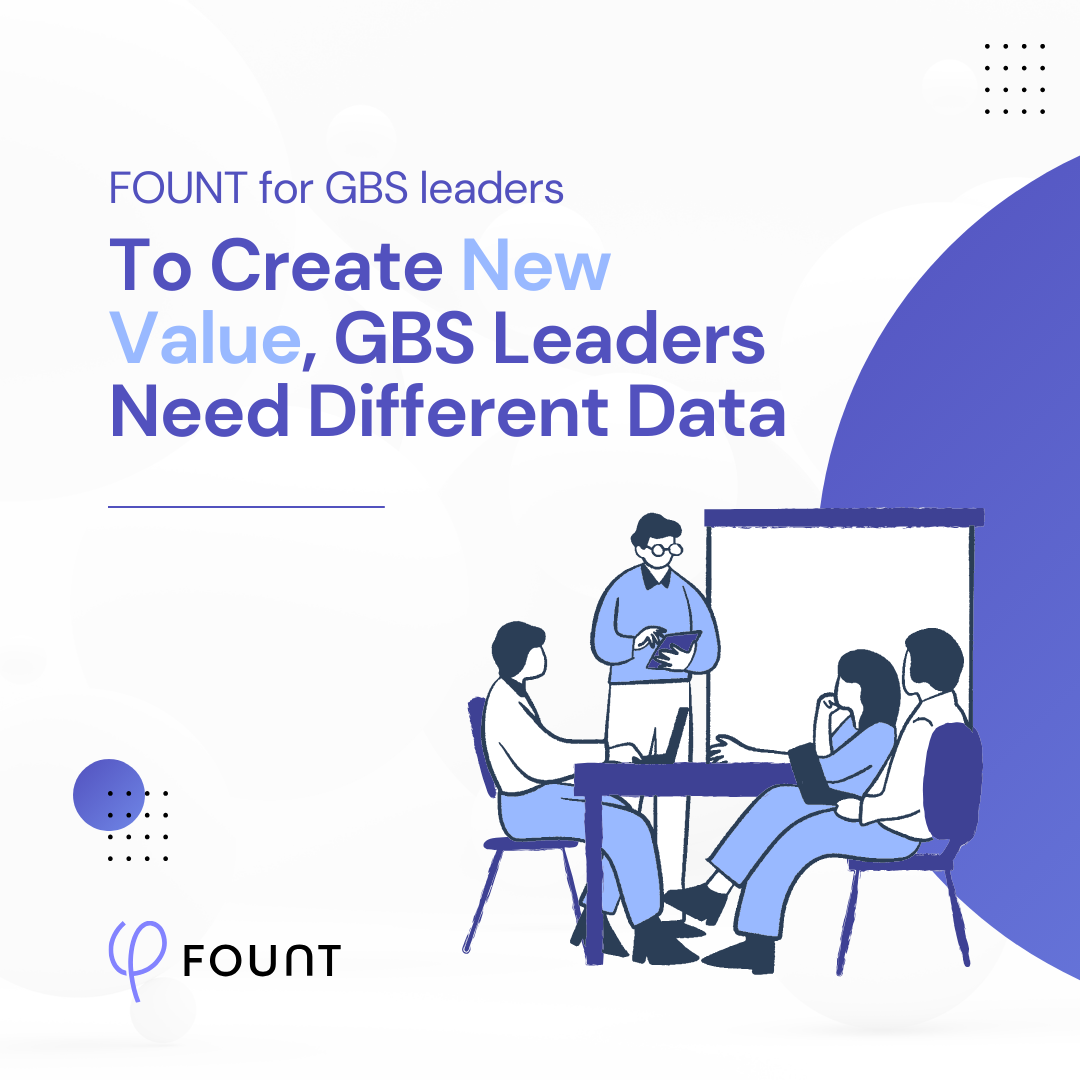
Insights
To Create New Value, GBS Leaders Need Different Data

Insights
How to Keep Up with the Latest AI Developments
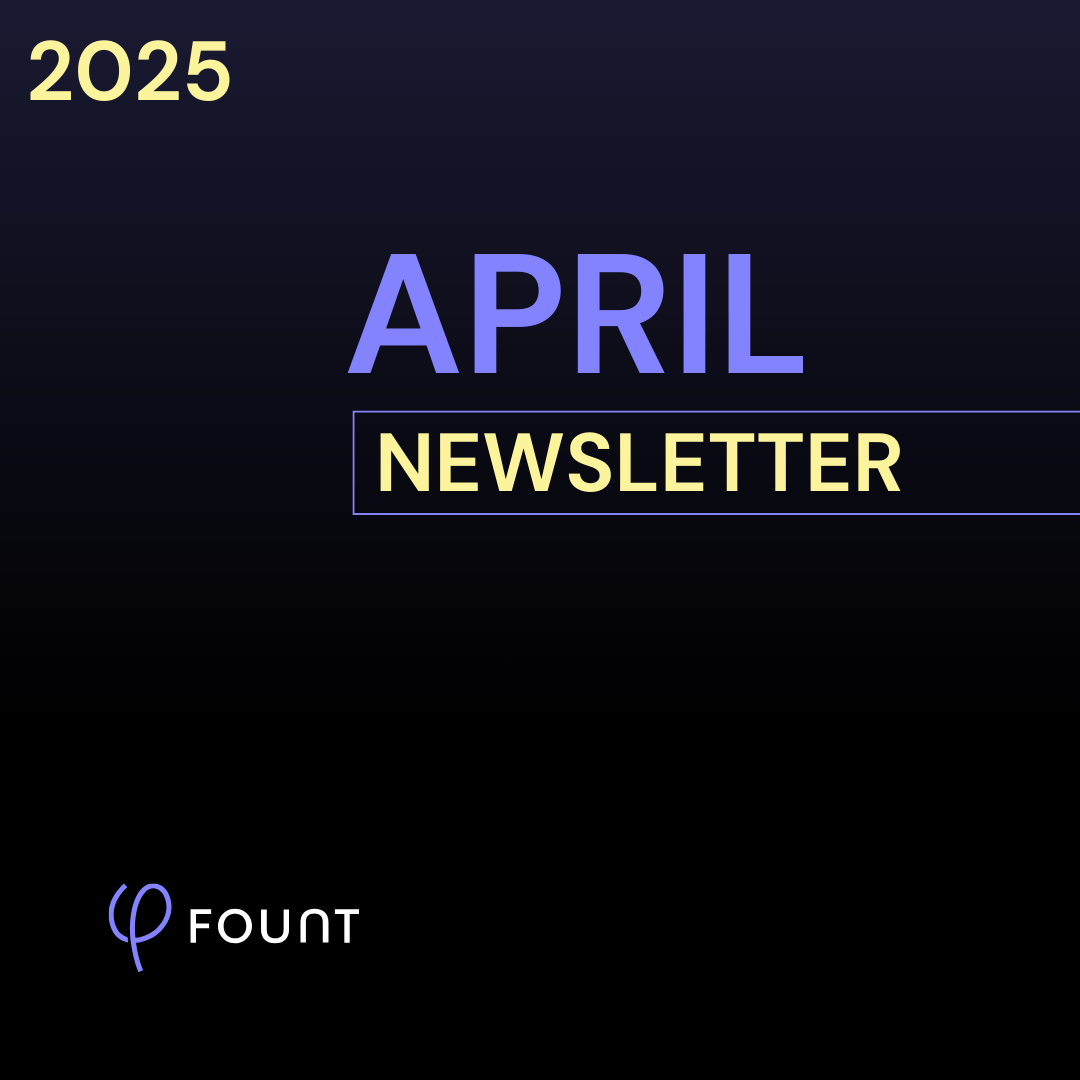
Insights
APRIL Newsletter. Friction: You Can’t Improve What You Can’t See

Guest Post
AI is Reshaping the HR Operating Model: Here’s What 15 Leading Companies Discovered
